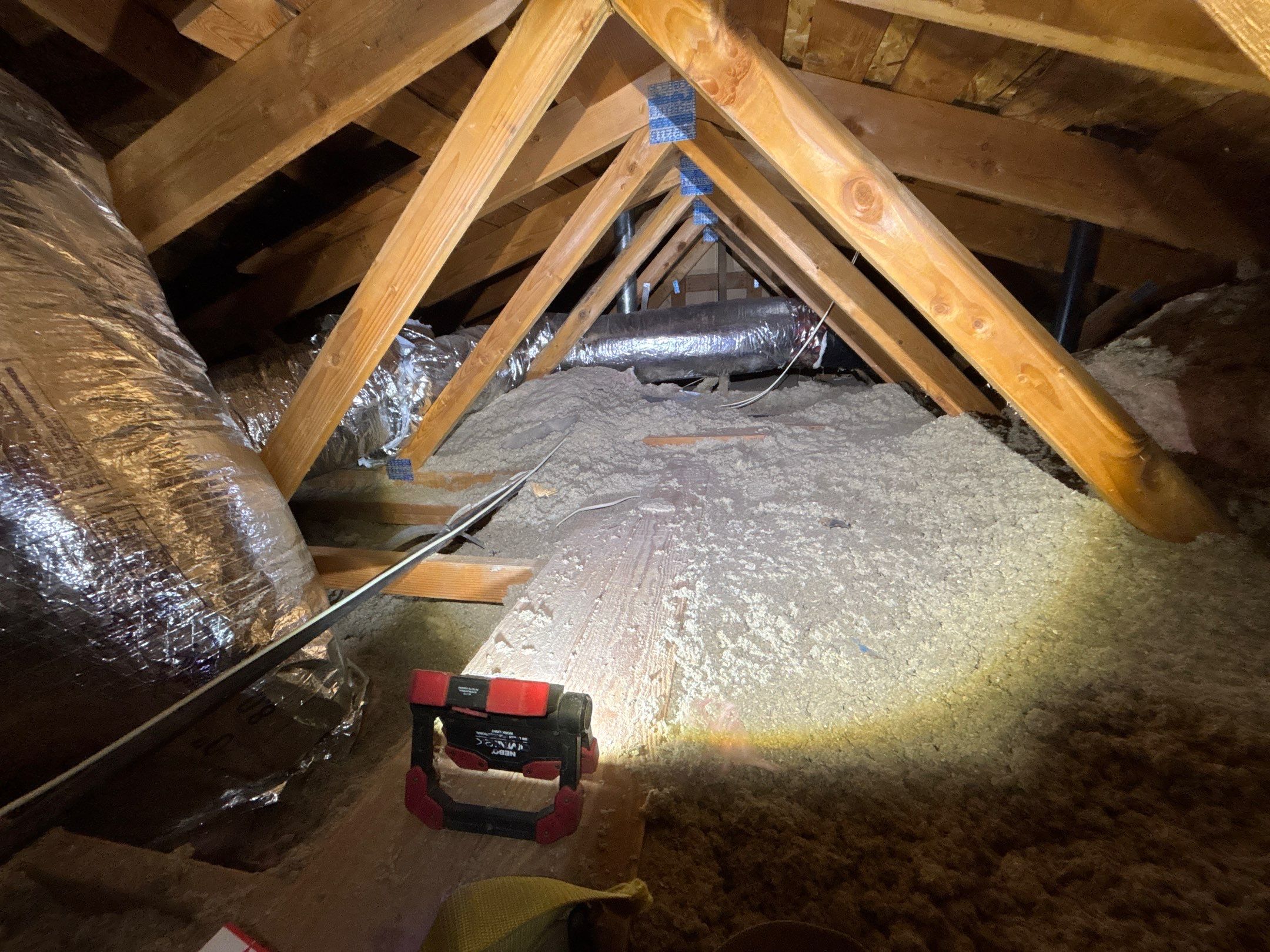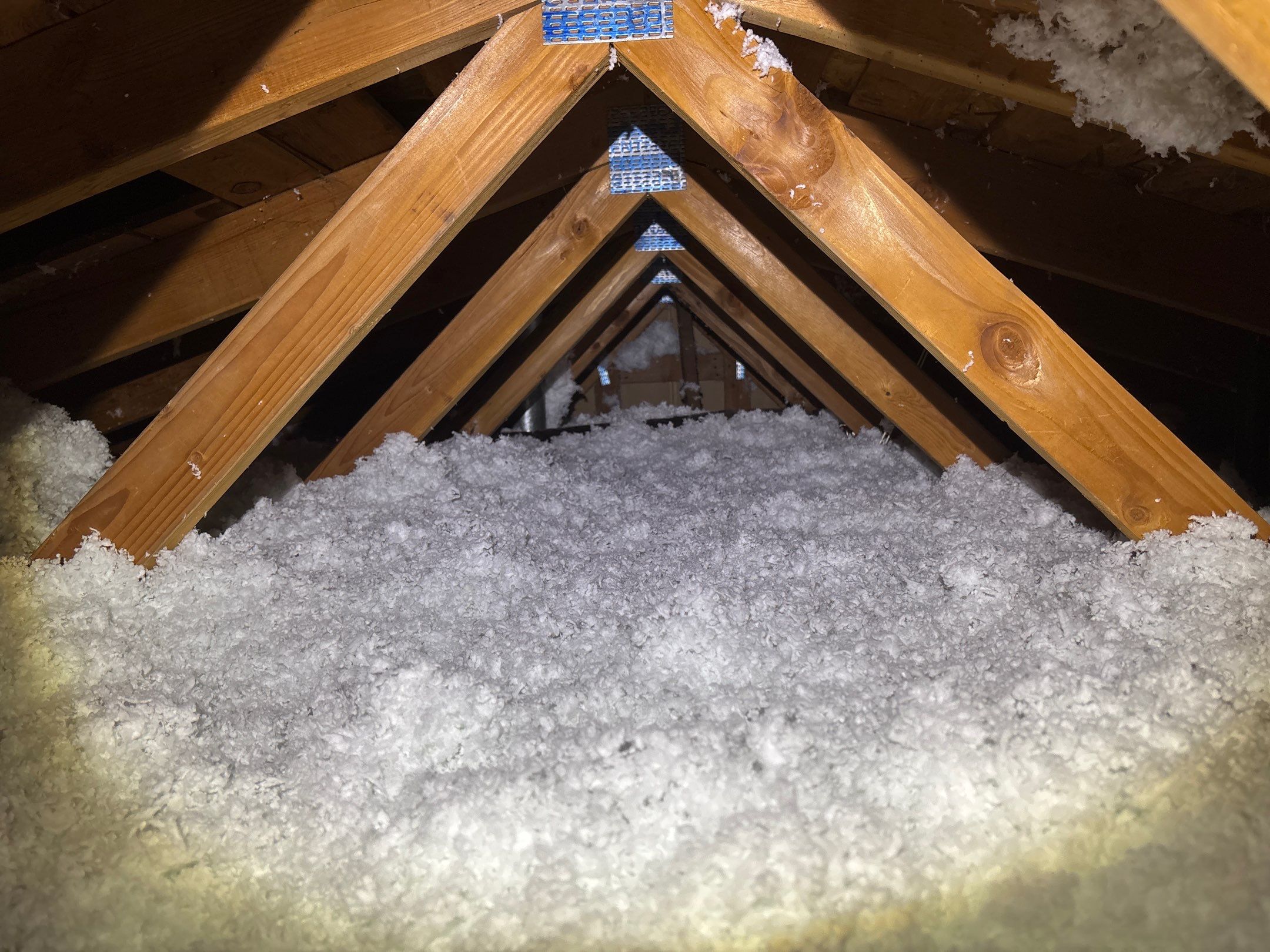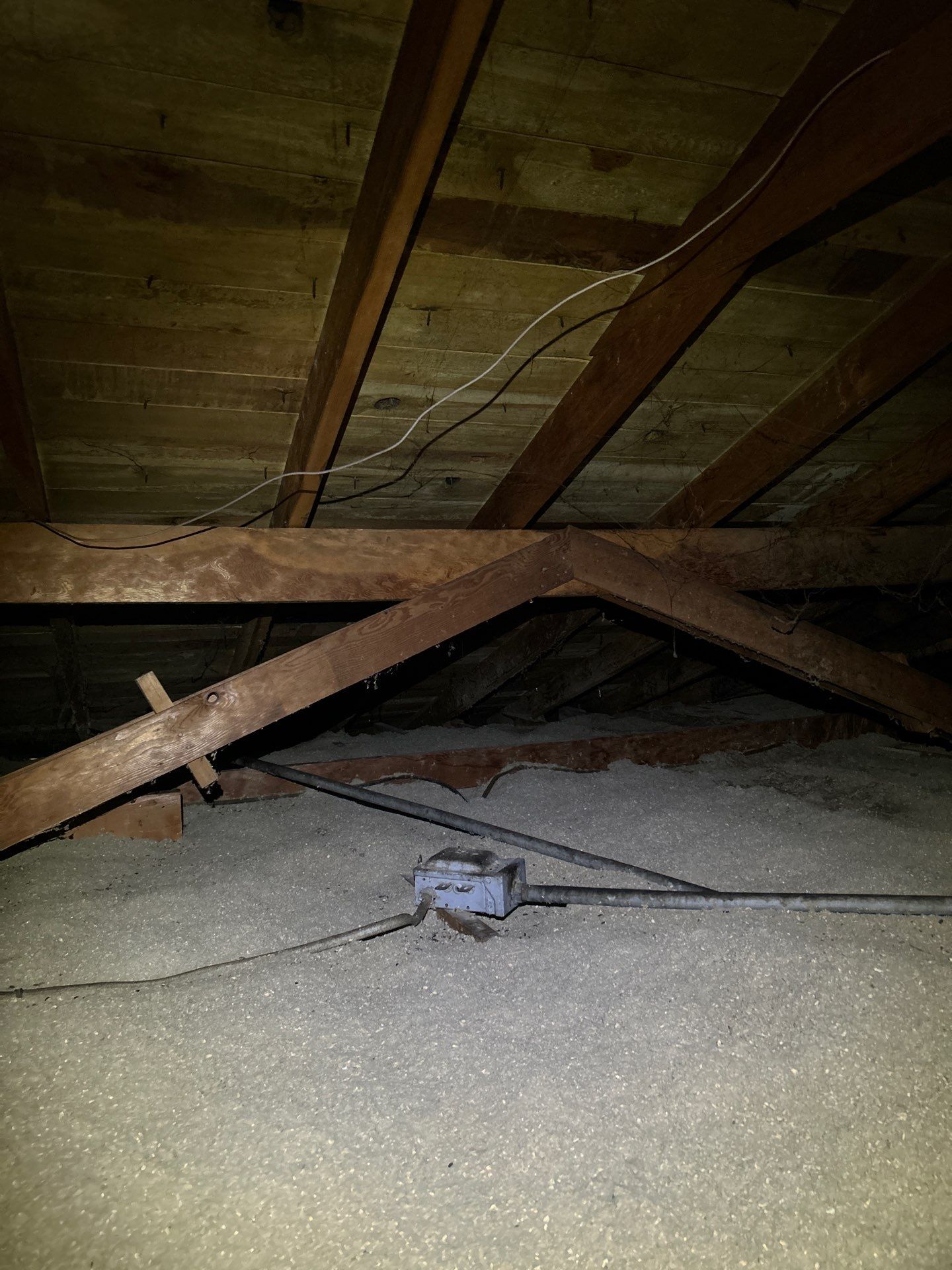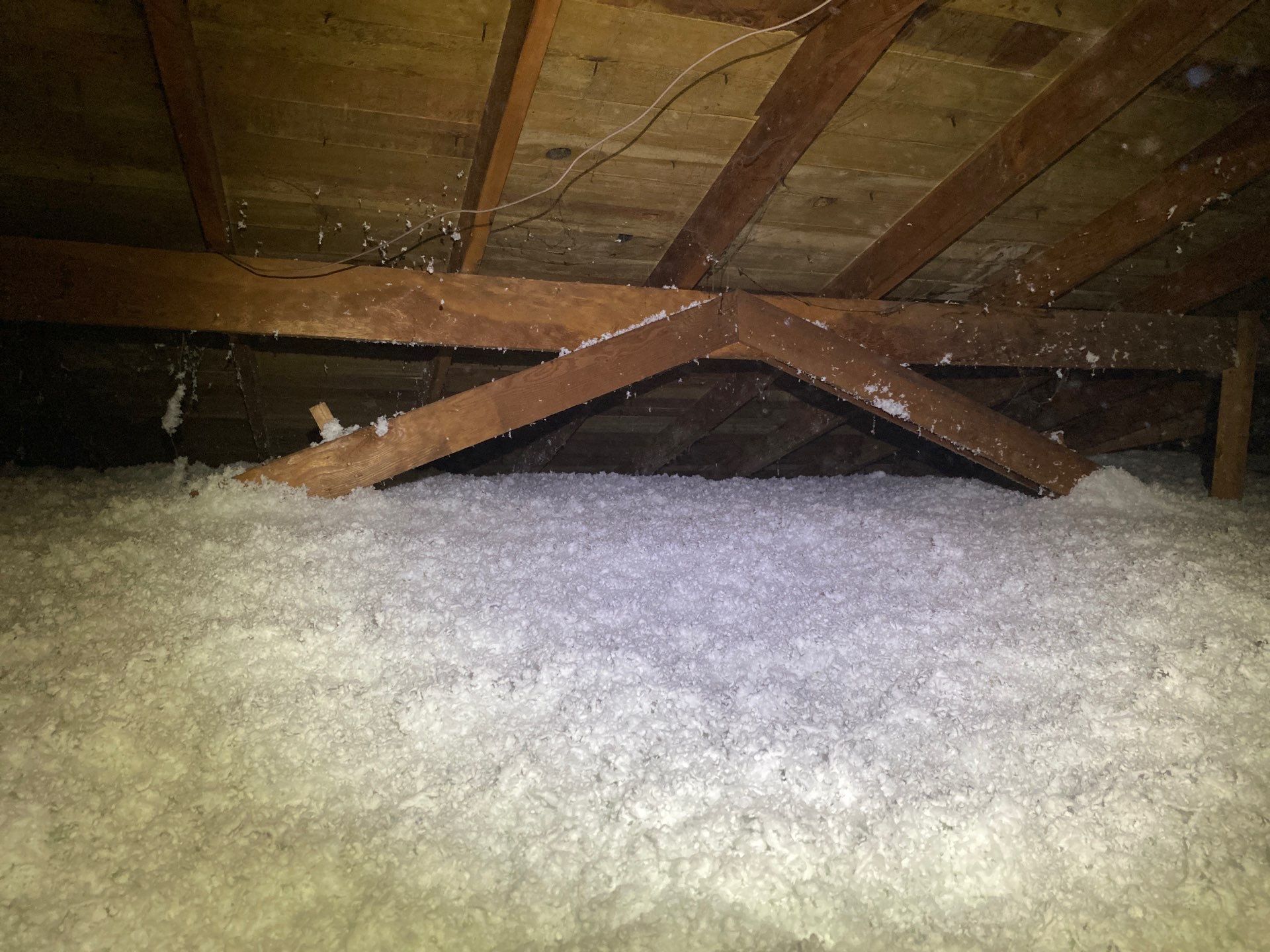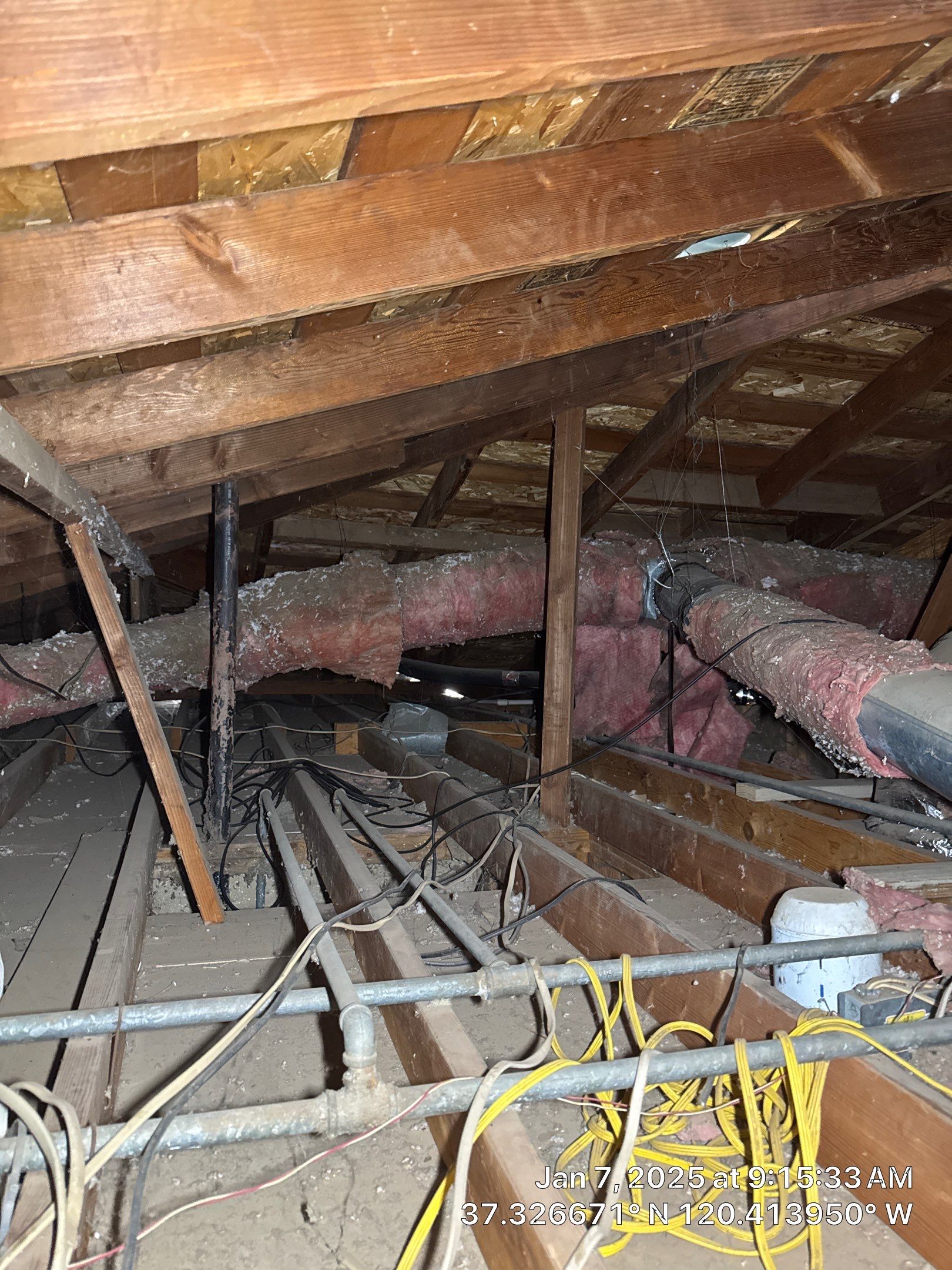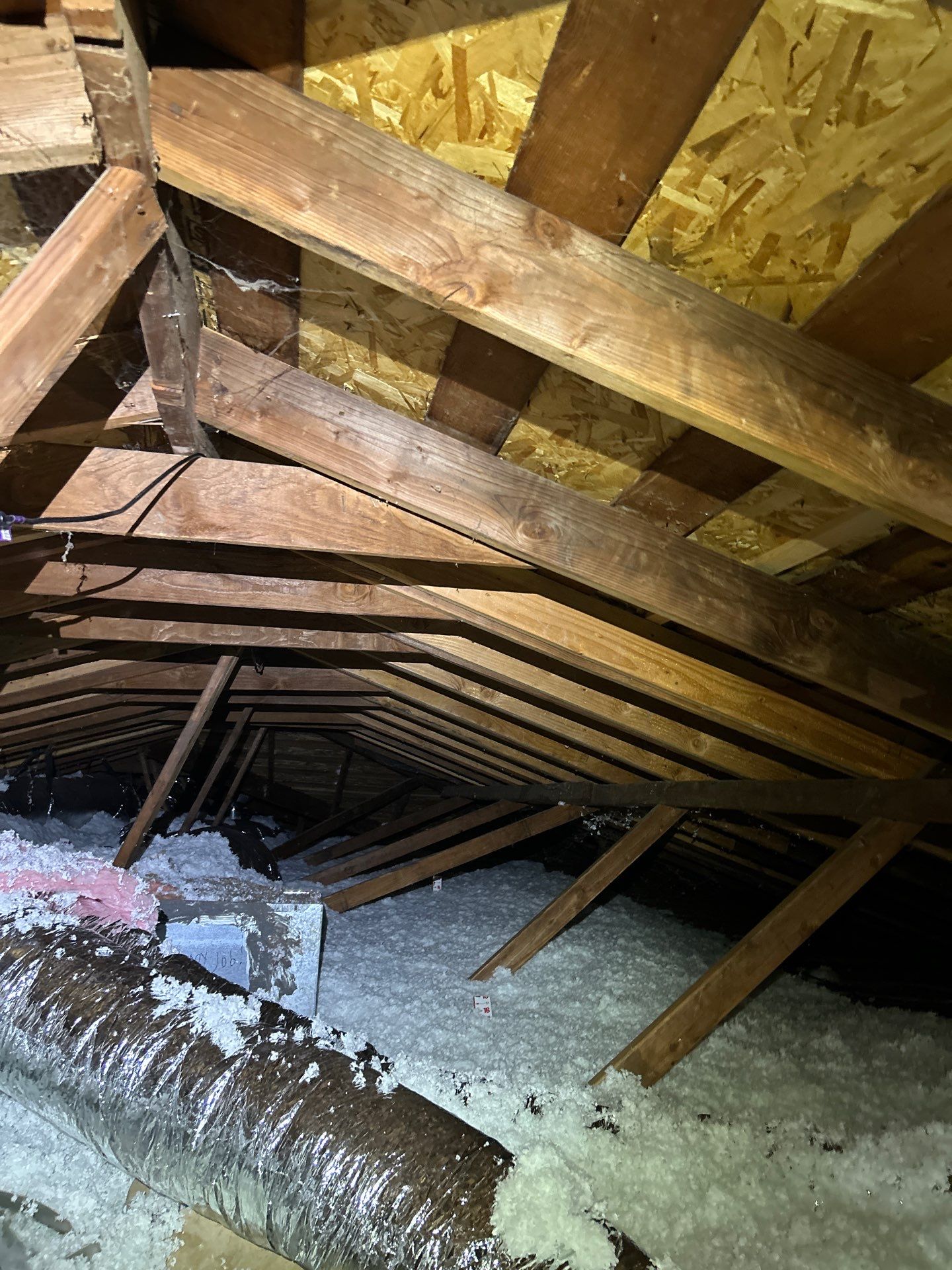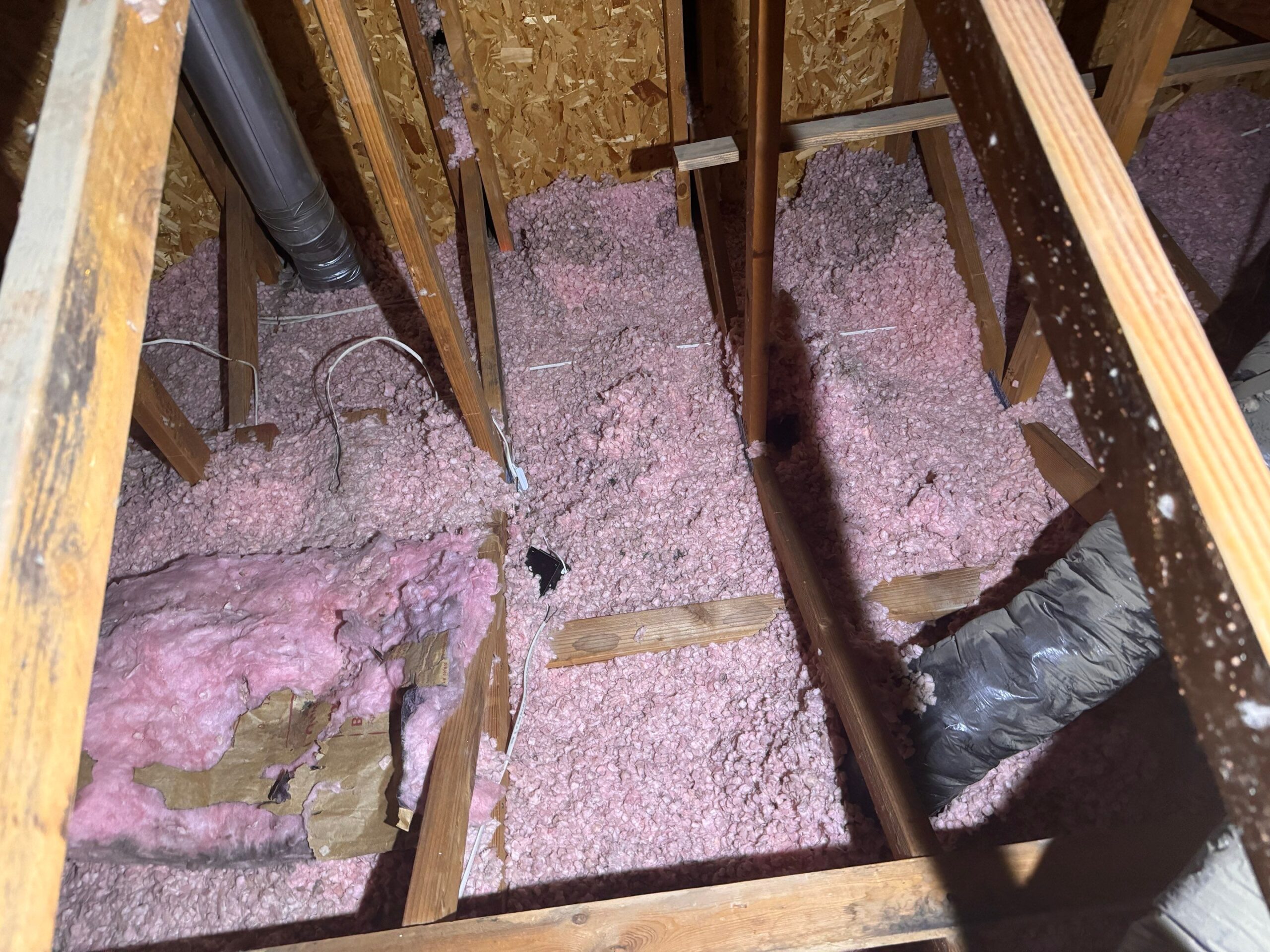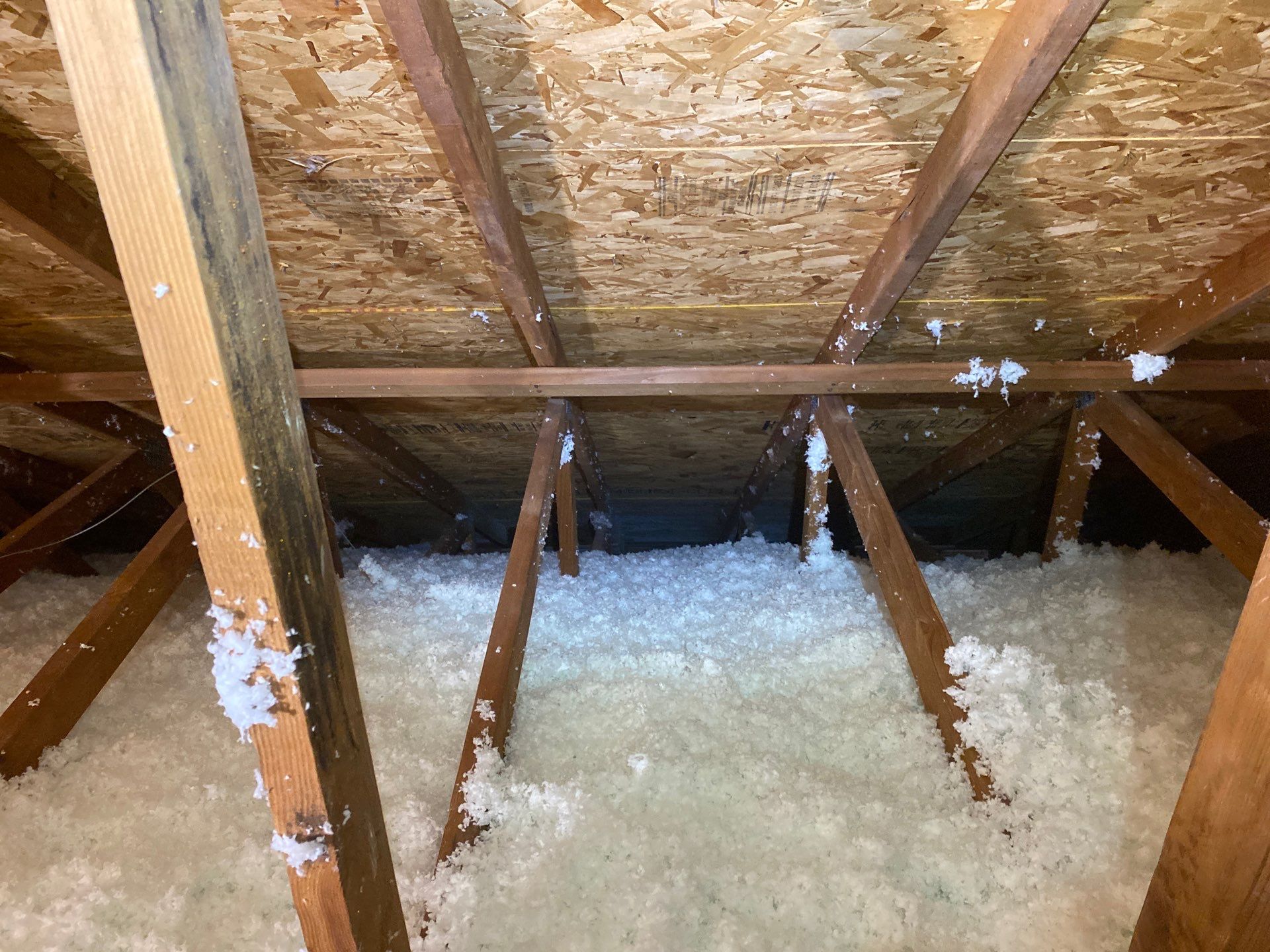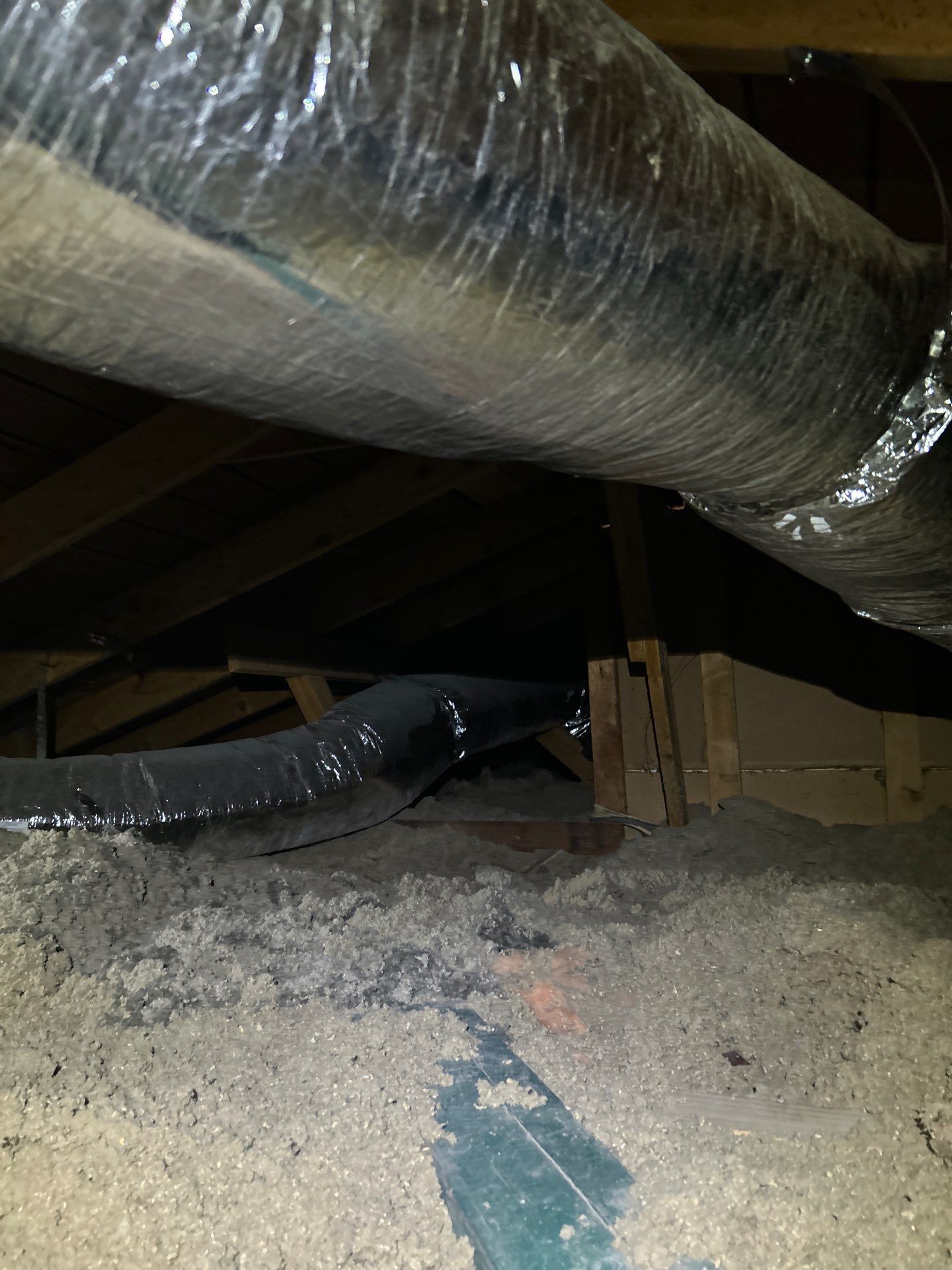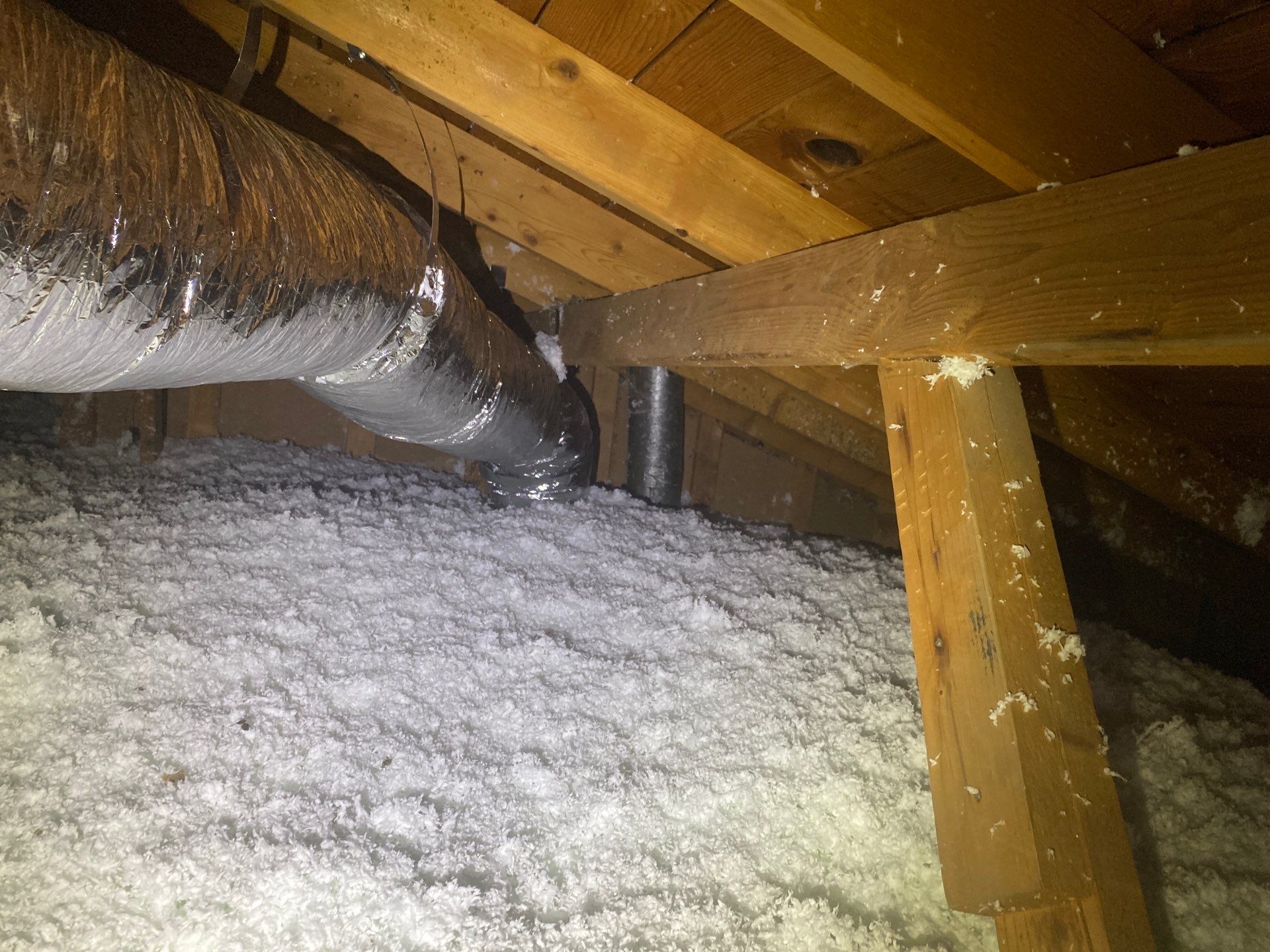Tyson Energy Solutions Before & After Photos
Click on a photo to enlarge.
Jason reached out to us because his home in Clovis was struggling to maintain a comfortable temperature, causing his HVAC system to work overtime and his energy bills to climb. When we inspected his attic, we discovered that he had only about 3 inches of old cellulose insulation—far below the recommended level. The inadequate insulation was allowing heat to transfer freely between his attic and living spaces, making it difficult to keep his home cool in the summer and warm in the winter.
To resolve this issue, we started by air-sealing key areas of the attic, including top plates, plumbing and wire penetrations, and HVAC registers, using closed-cell foam. This step prevents conditioned air from escaping and keeps the home more energy-efficient. We then upgraded his attic insulation by adding premium blown-in fiberglass insulation, bringing it up to an R38 level, which is the Energy Star recommendation for our region.
With this insulation upgrade, Jason’s home is now much better equipped to maintain a consistent indoor temperature. He will enjoy lower heating and cooling costs, improved energy efficiency, and a more comfortable home year-round.
Melissa contacted us because her home in Fresno was consistently uncomfortable, with uneven temperatures and rising energy bills. Upon inspecting her attic, we discovered that she had only about 4 inches of old, compressed cellulose insulation. This insufficient insulation was a major contributor to heat loss in the winter and heat gain in the summer, forcing her HVAC system to work overtime.
To address the issue, we began by safely removing the old cellulose insulation to create a clean slate. After clearing the attic, we meticulously sealed all potential air leaks, including gaps around wiring, plumbing penetrations, and other common trouble spots, using closed-cell foam. This crucial step helps prevent air from escaping or entering the home, improving energy efficiency.
Once the attic was properly sealed, we installed 14 inches of premium fiberglass insulation, bringing the attic up to an R38 level, which meets Energy Star recommendations. This significant upgrade enhances the home’s ability to maintain a stable, comfortable indoor temperature year-round.
As a result of this insulation upgrade, Melissa will now enjoy a more comfortable home, improved indoor air quality, and reduced heating and cooling costs by around 20% for years to come.
Steve reached out to us because his home in Merced was struggling with inconsistent temperatures and high energy bills. After conducting a thorough attic inspection, we discovered the root of the problem: only about 2 inches of old, compacted cellulose insulation in the attic, combined with aging, leaky ductwork. This combination was not only causing poor energy efficiency but also affecting the indoor air quality.
We started the attic restoration process by safely extracting and disposing of the old cellulose insulation. Next, we cleaned and sanitized the entire attic using Nisus DSV sanitizer, an effective disinfectant that eliminates bacteria, viruses, and fungi. We identified and sealed all air leaks around top plates, plumbing penetrations, and other gaps with closed-cell foam, significantly reducing air transfer between the attic and living areas. To prevent future pest issues, we also installed barriers at potential rodent entry points.
For the duct replacement, we removed the deteriorated ductwork and installed new, energy-efficient ducts, ensuring proper airflow throughout the home. This not only helps maintain even temperatures but also improves the HVAC system’s performance.
Finally, we blew in fresh, premium fiberglass insulation to bring the attic up to an R38 level, which meets Energy Star recommendations.
Thanks to these improvements, Steve’s home is now far more energy-efficient, with lower heating and cooling costs, improved indoor air quality, and enhanced year-round comfort.
Andrew contacted us because his home was experiencing extreme temperature fluctuations—hot and stuffy in the summer, and cold and drafty in the winter. Upon inspecting his attic, we identified the main issue: only 4 inches of old fiberglass insulation were present, which provided insufficient thermal protection. To address these problems and enhance his home’s comfort and energy efficiency, we recommended a full attic restoration.
Here are the steps we took to complete the attic restoration:
- Removed the old, insufficient fiberglass insulation to start with a clean slate.
- Air-sealed the attic using closed-cell foam to eliminate air leakage points, including around top plates, registers, recessed lights, and plumbing and wiring penetrations.
- Cleaned and sanitized the attic thoroughly to remove dust, contaminants, and potential allergens, improving indoor air quality.
- Installed rodent-proof barriers to prevent future infestations.
- Blew in premium fiberglass insulation to reach the Energy Star recommended R38 level for optimal thermal efficiency.
- Provided Andrew with detailed before and after photos to highlight the improvements made.
Following the attic restoration, Andrew’s home now maintains a consistent, comfortable temperature throughout the year. The improved insulation and air-sealing reduce the workload on his HVAC system, resulting in lower energy bills and enhanced indoor air quality.
Thomas reached out to us seeking a solution to the discomfort in his home, particularly the hot, stuffy summers and cold, drafty winters. After inspecting his attic, we discovered the root of the problem: there were only about 4 inches of old cellulose insulation, which was far from sufficient to keep his home energy-efficient and comfortable year-round. We determined that an insulation upgrade to R38 was necessary to improve his home’s thermal performance and reduce his HVAC usage.
To complete the R38 insulation upgrade, we followed these steps:
- Air-sealed all visible leakage points to prevent air from escaping or entering the living spaces.
- Blew in premium fiberglass insulation to reach the Energy Star recommended R38 level.
- Provided Thomas with detailed before and after pictures to showcase the transformation.
As a result of the insulation upgrade, Thomas will enjoy a more comfortable home with even temperatures throughout the year. His HVAC system will run more efficiently, leading to reduced energy bills, and his home will no longer suffer from extreme temperature fluctuations between seasons.


